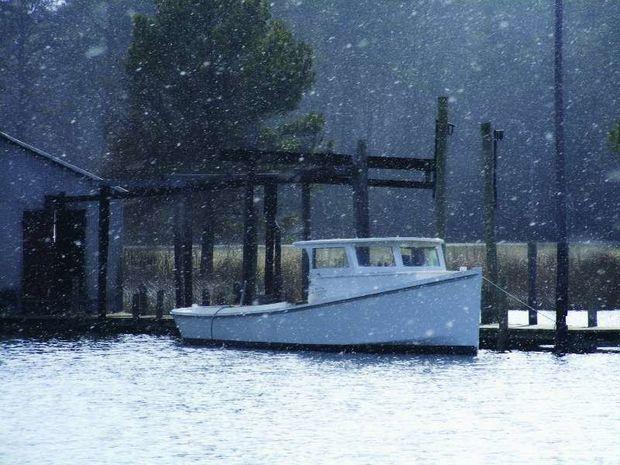Many boats will remain snugly tucked away for the next couple of months, but out of sight should not mean out of mind for the responsible boat owner. Whether it’s tied in a slip, resting on a lift, stowed at a yard, or sitting on a trailer on your driveway, winterizing a boat is not a “fix it and forget it” type of thing.

“Boat owners should be checking on their boats regularly,” says a local boat mechanic with decades of experience. “Even during the winter, I recommend my clients visit their boats once a week. You wouldn’t believe the things I’ve seen over the years. Once the damage is done, it can be costly to repair, and while that means work for me, it’s not the kind of work I want. I’d much rather keep someone’s boat running well than do repair work on damages that could have been prevented.”
Don’t be lulled into a false sense of security simply because the boat was winterized and covered. Water that accumulates in a boat can do substantial damage, especially if it freezes. According to BoatUS, fresh-water expands in volume by about nine percent when it freezes and can push outwards with a force of tens of thousands of pounds per square inch. That expansion can crack an engine block, damage fiberglass, split hoses, or destroy a refrigeration system overnight. This is why proper winterization is essential, but it’s not the end of the road.
Covers tend to leak and sometimes rip, shred, or get blown off by strong winds or heavy snow. It’s well worth your time to ensure any cover or tarp is secure and water isn’t puddling, especially in the cockpit area. When it snows, check to see that it’s sliding off the cover, not weighing it down. A boat filled with heavy snow sitting on a lift with marginal capacity can push the lift beyond its limits. Even if the lift can handle the weight, eventually that snow will melt, and you must look to see that the water is draining off the cover and the bow is high enough for any water that soaks or leaks through to drain properly.
A boat on lift, jack stands, or trailer will be exposed to colder temperatures sooner than a boat in the water, since river water stays warmer longer; but still, you can protect your boat and buy a little piece of mind by installing a deicer before you need one. Deicers, also called bubblers, bring the relatively warm water up from the bottom and prevent ice from forming around the hull.
Do not assume your float switch or automatic bilge pump will properly operate the entire season. Hopefully it will, but in the event the latter fails, or if it runs continuously and drains the battery, the boat will need to be attended to promptly. And while you’re at the pier, don’t forget to check for chafing dock lines.
For a boat wintering in its slip, pay attention to how she is sitting in the water. Is she lower than normal? This could indicate water is filling the hull, or heavy snow on the cover (or on the deck and cockpit of an uncovered boat) is weighing her down. If through-hulls that are normally above the waterline become submerged, your boat will be at risk of sinking. An ounce of prevention is worth a pound of cure, and a watchful eye now will serve you and your boat well when it’s time for the spring splash.
By Beth Crabtree